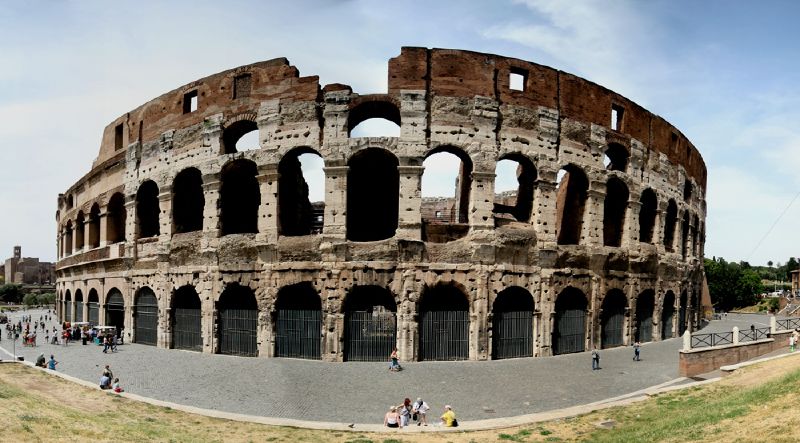
This photo of the Colosseum is part of one of the panoramic images found on the PanoramicEarth.com Tour of Rome. There are over 100 images taken from around
Even in a ruined state the Colosseum is impressive. A massive amphitheatre designed to hold some 50,000 people purely for the delight of seeing man and beast slaughtered in the sandy arena. Originally called The Flavian Amphitheatre after the Emperors of the Flavian family in
Although the structure is huge (an oval 188m long and 156m wide) the name comes from the Colossus of Nero, the largest bronze statue ever to have been built (it stood about 40m high) by the megalomaniac Emperor. It was transported here by 24 elephants after his death. It was then named after the sun god and the head was often changed to match the Emperor of the day. All that remains of it now is the base, fenced off near to the Arch of Constantine.
The Colosseum was partly built as a public relations exercise, the space it occupies used to be part of Nero’s private pleasure gardens, and Vespasian sought to gain favour by returning the site to the people. Building the largest amphitheatre in the world, right next to the Roman Forum, seemed like a good idea at the time. When constructed, the Colosseum originally stood in the middle of a lake.
Spectators would enter the Colosseum through one of 76 numbered entrances at ground level. Today these arches are locked with railings as shown here. Each ticket would specify the gate, tier and seat number and by all accounts ran much smoother than many large auditoria or football stadia do today. It was said that the 50,000 spectators could be seated within 10 minutes of opening up for the day. In fact all modern stadiums have copied the plan of the Colosseum to some degree.
Over time much of the stone work has been used for other projects, including St. Peter's Basilica in the Vatican. Nowadays a busy road runs around the Colosseum, but even this does not detract form the impact of the structure. Tickets to the Colosseum also allow entry to the Palatine Hill.
A full panoramic image showing the area around the Colosseum is found on the Rome tour by PanoramicEarth.com. An enlargement of this photo can be found on Flickr.
For more articles on
No comments:
Post a Comment